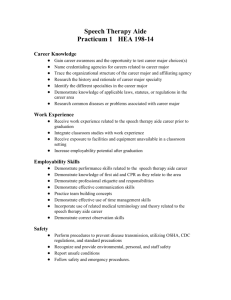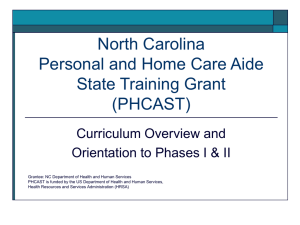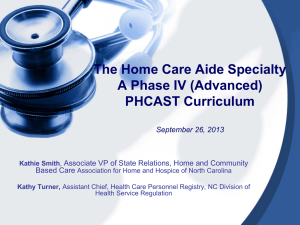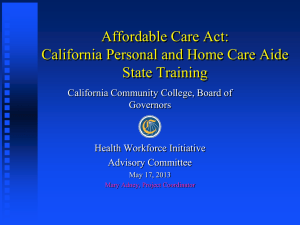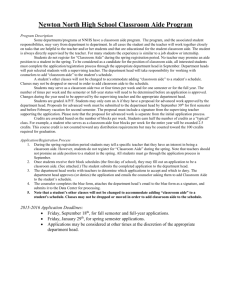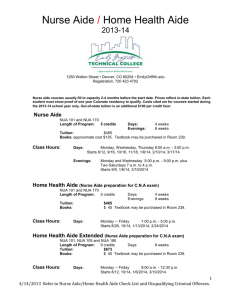PowerPoint - North Carolina Foundation for Advanced Health
advertisement
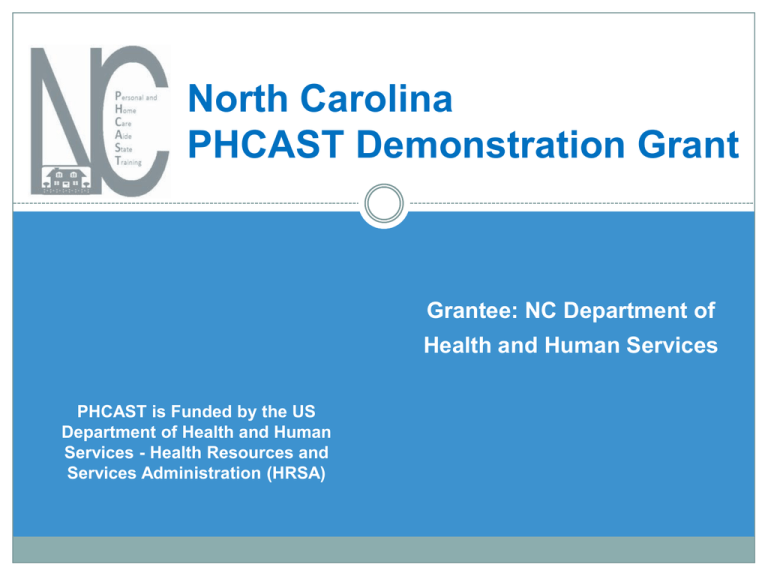
North Carolina PHCAST Demonstration Grant Grantee: NC Department of Health and Human Services PHCAST is Funded by the US Department of Health and Human Services - Health Resources and Services Administration (HRSA) Key Concepts 1. Builds on prior direct care workforce (DCW) initiatives in NC and Partner Team approach to development and implementation 2. Strengthens new AND incumbent direct care worker training 3. Uses a 4-phase framework that integrates training pathways for direct care workers across long term care settings 4. Expands state-recognized DCW career path options 5. Improves all training using adult-centered learning strategies to increase access to health care jobs 6. PHCAST training/competency can be integrated with other initiatives to improve direct care jobs PHCAST Personal and Home Care State Training COMPONENTS Phase I - Job readiness, Literacy/Numeracy, keyboarding and realistic job previewing skills Phase II - Non-Nurse Aide personal care task and soft skills development Phase III - Enhanced Nurse Aide content/delivery Phase IV - Advanced Nurse Aide I knowledge & skills- Home Care Nurse Aide (new) focuses on specific care environment. This phase will also create a track parallel to Geriatric aide or Medication aide career path options for nurse aides in NC. NC PHCAST Project Status Curricula/competencies developed (Phases I, II, IV Home Care) & pilots on-going Revised Phase III (NA) curriculum & available for statewide use - required use by Fall 2013. NC Home Care Aide Registry implemented Compiling pilot feedback for curricula revisions (I, II & IV) Adult Care Home pilots identified for in-service training Importance to Workers, Employers, Consumers, Others Realistic job previewing and workforce matching Competency based and achievement oriented phases taught through high schools and community colleges Develops a model for personal and home care aide training (entry-level and advanced) NA I training enhanced with additional adult learning strategies and new delivery format Enhanced state recognized career paths, employability System and competencies responds to employer needs Option to use curricula modules for in-service training use Importance to Workers, Employers, Consumers, Others More efficient use of NA I training programs (e.g., diverts or retains employee/learners based on full information regarding jobs) Employer recruitment of workers more focused Reduces persistent barriers to training High School students – job/career ready (NA I & Phase IV) Integration with other QI Initiatives Better trained/more competent workers = better care for consumers Preliminary Indicators of Success We are meeting a need. Enrollment has exceeded our expectations with 12 community colleges, 3 high schools and 250 of the 300 participants enrolled by the middle of year 2. Educational partners perceive this 4 phase model as filling an important gap for unemployed workers seeking work in health care. Approximately 80% of phase 1 enrollees, persist into phase 2 (Direct Care Basics). Employer-Educator partnerships are building where students are also incumbent workers. Key Facilitators for Success Partnership (Stakeholders at the table and invested in the process) Incremental and meaningful career lattice development Manageable yet meaningful steps Clarify pathways Align with competencies Align with incremental rewards Early success breeds later persistence Leveraging resources: Community college integration Sustainability Framework makes sense for North Carolina Phases I & II, linked to human resource development programs State-recognized job categories Responds to employer need Integration with other DCW policy/practice initiatives (e.g., NC NOVA, Star Rating, in-service training) Potential to add new modules/job categories Employers and other key stakeholders involved in process Beyond PHCAST Work with employer partners to meaningfully integrate training with career lattices Work with employer partners to disseminate continuing education modules Integration with other settings Effective Interdisciplinary Teams Additional modules/job category Consumer directed care training issues
